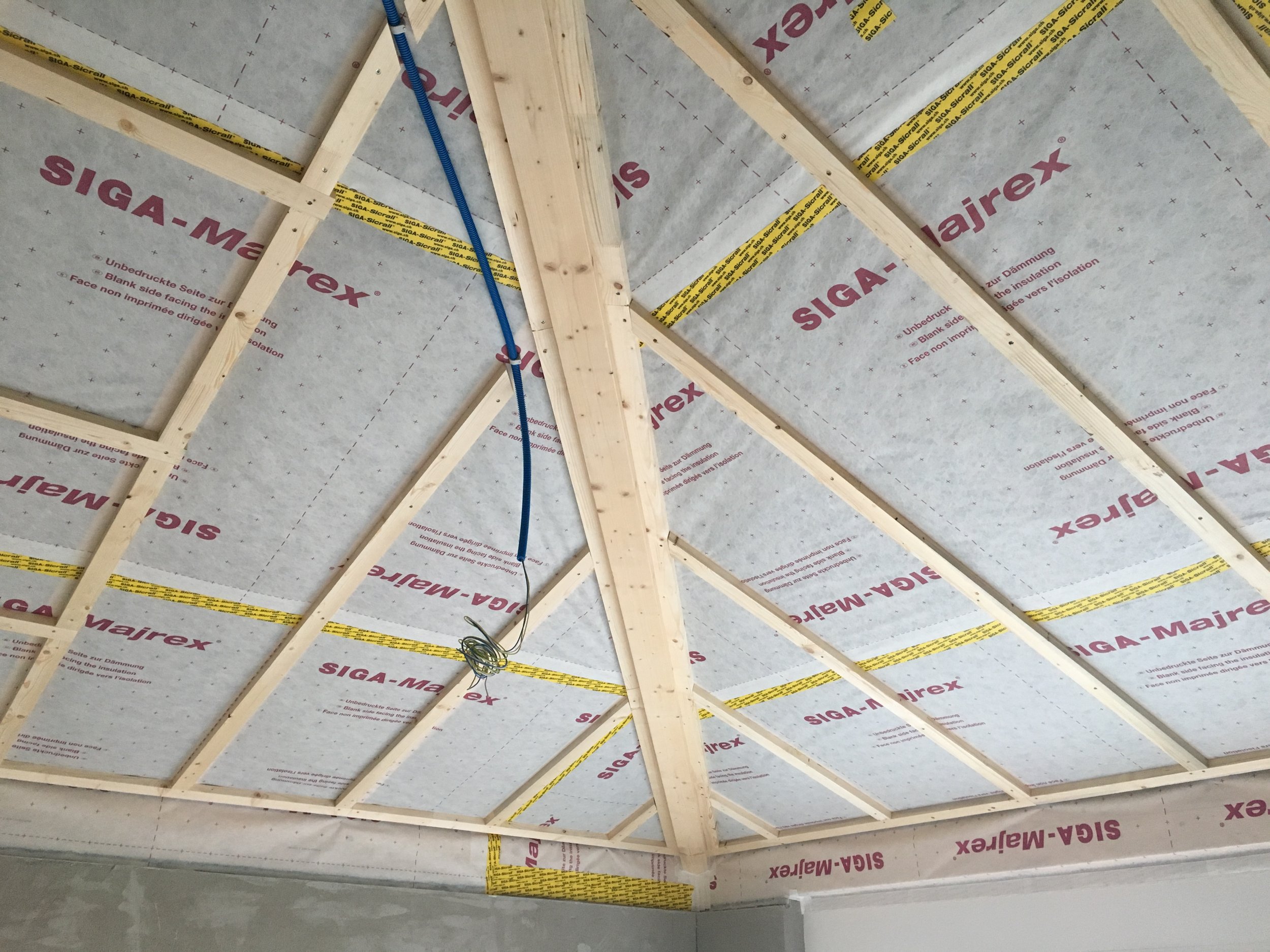
Measuring Airtightness.
It’s simple. It all starts with Airtightness. The more airtight a building is, the more energy efficient it becomes. It can determine the insulation thickness, ventilation, and heat recovery systems. Increasing airtightness will decrease material and running costs.

We are the first Airtightness Champions, certified by LOETB and Mosart.
Creating an airtight and vapor control environment gives you control.
Heat loss
Reducing heat losses.
Condensation
Eliminating interstitial condensation.
Draughts
Eliminating draughts.
Fresh air
Continuous filter fresh air.
Health
Create a comfortable and relaxing healthy environment.
Heating
Reduce heating costs by increasing efficiency of ventilation and heating.
Sound proof
Improving sound proofing.
BER value
Better airtightness = less insulation = less costs and better BER Value
Levels of airtightness
in a building
A. HOUSE WITH LOW LEVEL OF AIRTIGHTNESS.
Leads to energy leaks.
High energy bills.
Structural degration.
Trapped moisture and condensation
Increased C02 emissions.
B. HOUSE HIGH LEVEL OF AIRTIGHTNESS.
Reduced energy use.
Low energy bills.
Healthier living environment.
Structural protection form moisture damage.
No mould growth, rot, damp and condensation
Airtightness
planning sequencing
Careful planning and execution from the very beginning of any new build or refurbishment is critical to success. A great deal of attention must be paid to detailing and quality of craftsmanship, especially around junctions between walls and floors, roof, windows, and doors etc.
Using specialist Airtight membrane and Tapes. Airtight caulk, Liquid applied membranes, Airtight Grommets, Vapor variable, Bidirectional and Unidirectional membranes all have a role to play. Even Electrical conduits chased walls and service voids require specialist expertise to seal within the airtight and vapor control envelope. We work with SEAI grants, so let’s discuss your specific requirements.
More about our
Airtightening service.
-
We specialize in fitting all airtight membranes, spray on liquid membranes, tapes and seals. We can set up an Airtightness Quality Control Station for reporting any penetrations, Nominating a site "Airtight Champion" to promote the importance of Airtightness and repair any faults or penetrations as you move through the construction phase. We can monitor progress, supply any tapes or materials and carry out intermediate testing before any areas are closed in preventing costly delays. Airtightness is a team effort - we all need to be on board.
-
Timing – intermediate airtightness testing is imperative and should be carried out at least once before 2nd fix, carpentry and any wall covering that does not form part of the airtight layer. All mechanical and electrical services that need to penetrate the building airtight envelope should already have been installed. It is important to allow clear access so remedial measures can be easily carried out to fix/remedyany leaks or cracks.
-
The final air permeability test is usually undertaken close to completion. The external envelope must be complete with all windows, doors and service penetrations installed and air sealed.
-
The Door Blower test is a quantitative assessment, which culminates in either a pass or a fail result against a design value and should meet the provisions of section 1.5.4 of TGD L.
Mechanical ventilation must be provided where airtightness is less than 3m³ (hr/m² ).







